KIM Master Map North Lorrain 2019
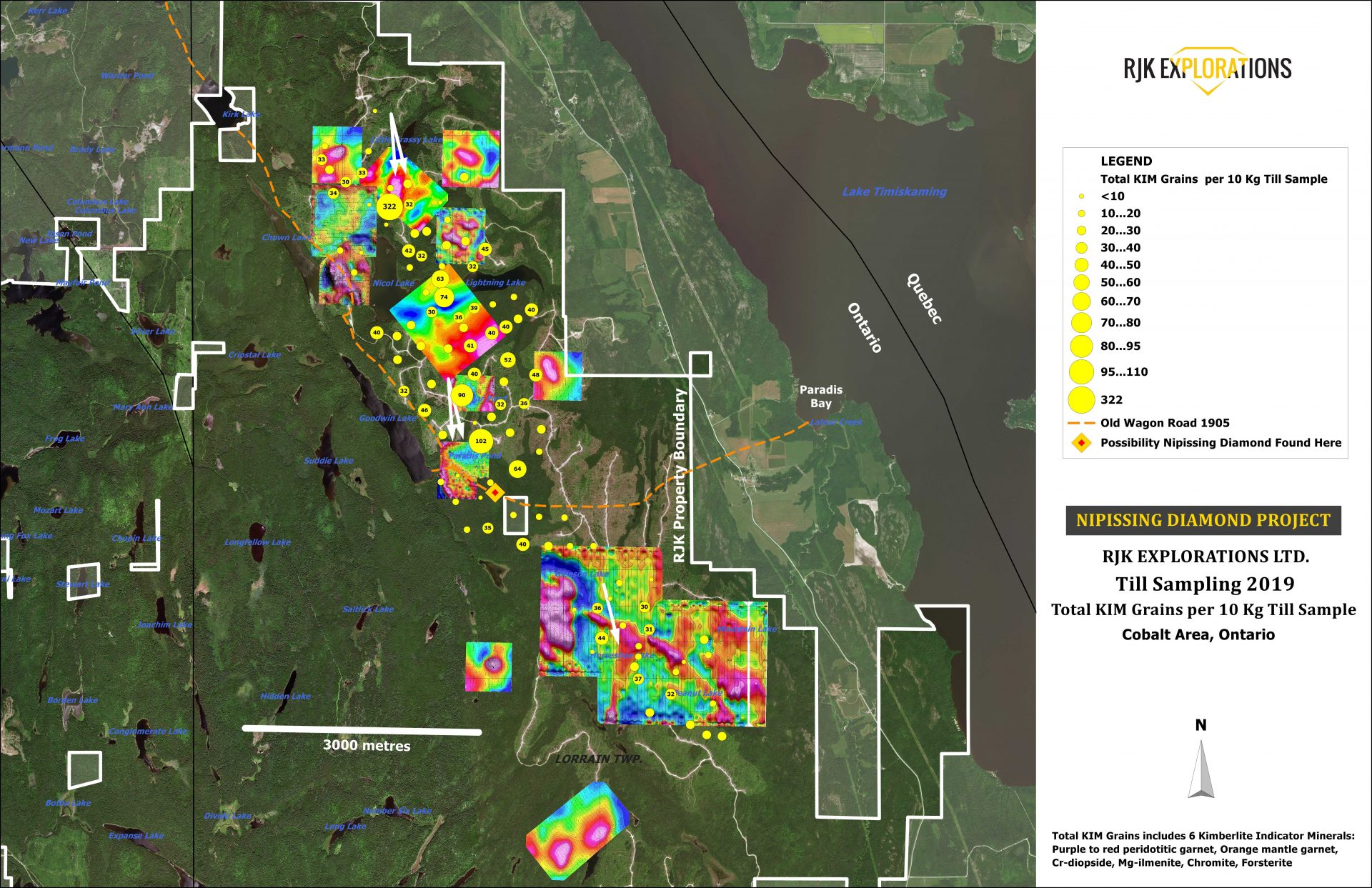
Notes:
- This map includes results from the 2019 KIM sampling program only. The results confirmed the sampling reports completed by the Bishop family south of Grassy Lake between 2014 and 2018, which returned abnormally high amounts of KIMs in concentrate. Select grains from that concentrate confirmed presence of KIMs in probing.
- Two kimberlite boulder samples were discovered down-ice from the Grassy Lake target, both nearby the KIM sample locations.
G9 & G10 Garnets
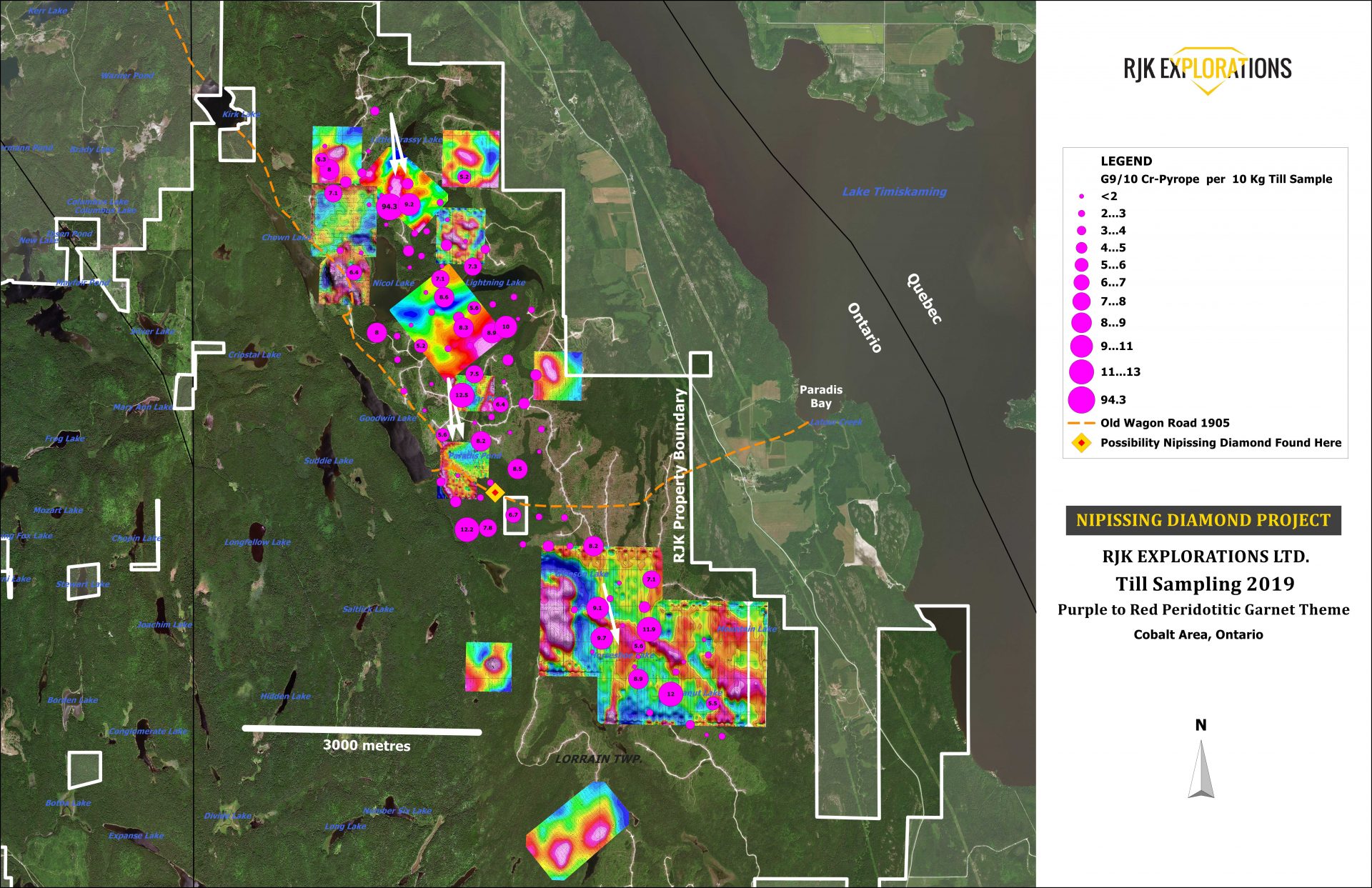
Notes:
- Traditionally, G9 and G10 garnets have been used to determine the potential for diamonds in their kimberlite sources. Like Ilmenites, their chemistry is very important, as specific types are generally correlated with diamondiferous pipes.
Eclogitic Garnets
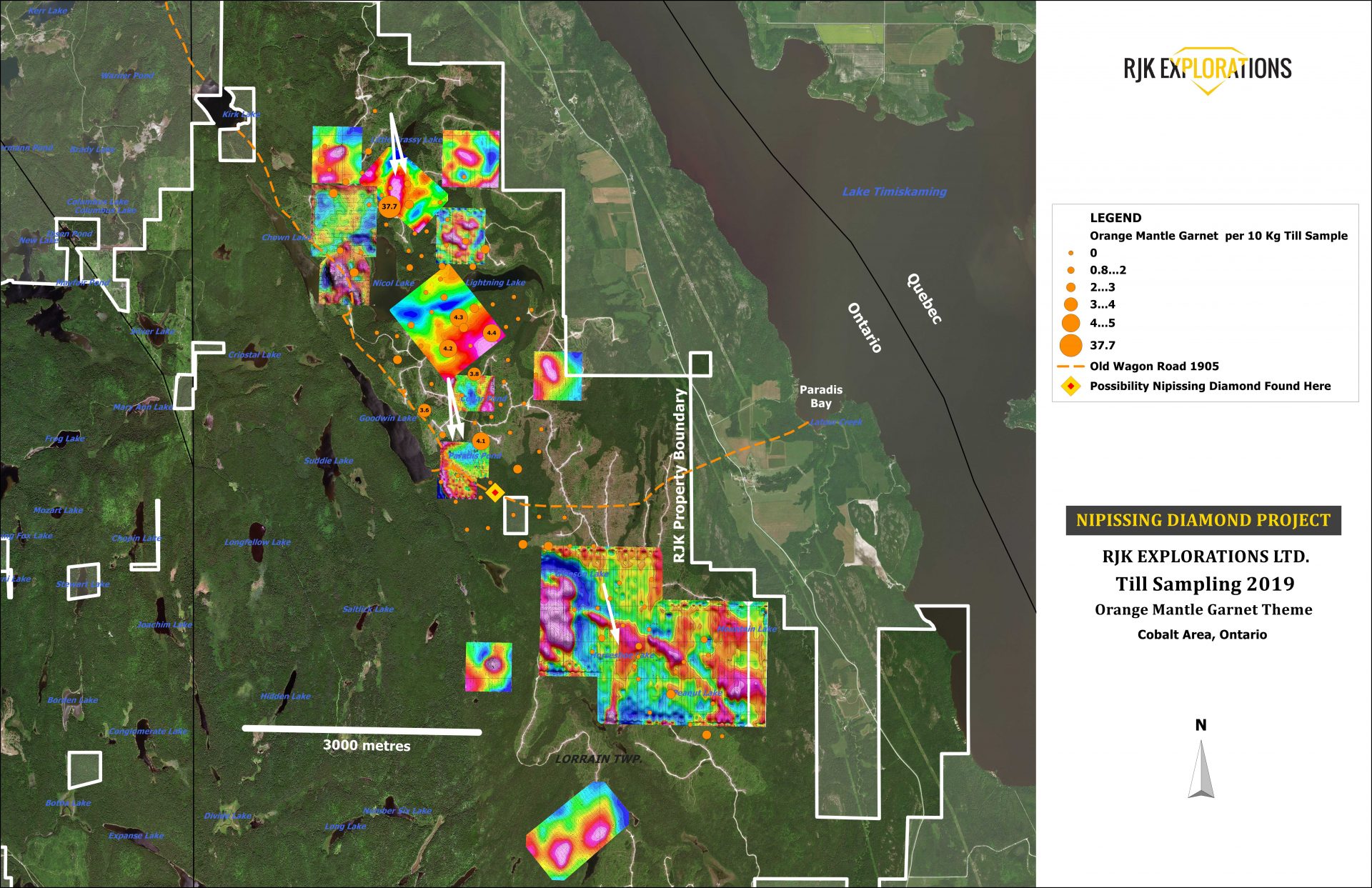
Notes:
- Discovery of Eclogitic Garnets was an important step in determining that De Beers’ Victor kimberlite pipe contained economic diamonds. Eclogitic garnets are believed to originate very deep within the earth’s mantle, where larger diamonds are believed to be formed.
- The Victor Mine won a “Mine of the Year” award in 2008, paying back its entire $1 Billion Capex in year one. It was previously in production for 12 years, producing very high quality diamonds.
Chrome Diopsides
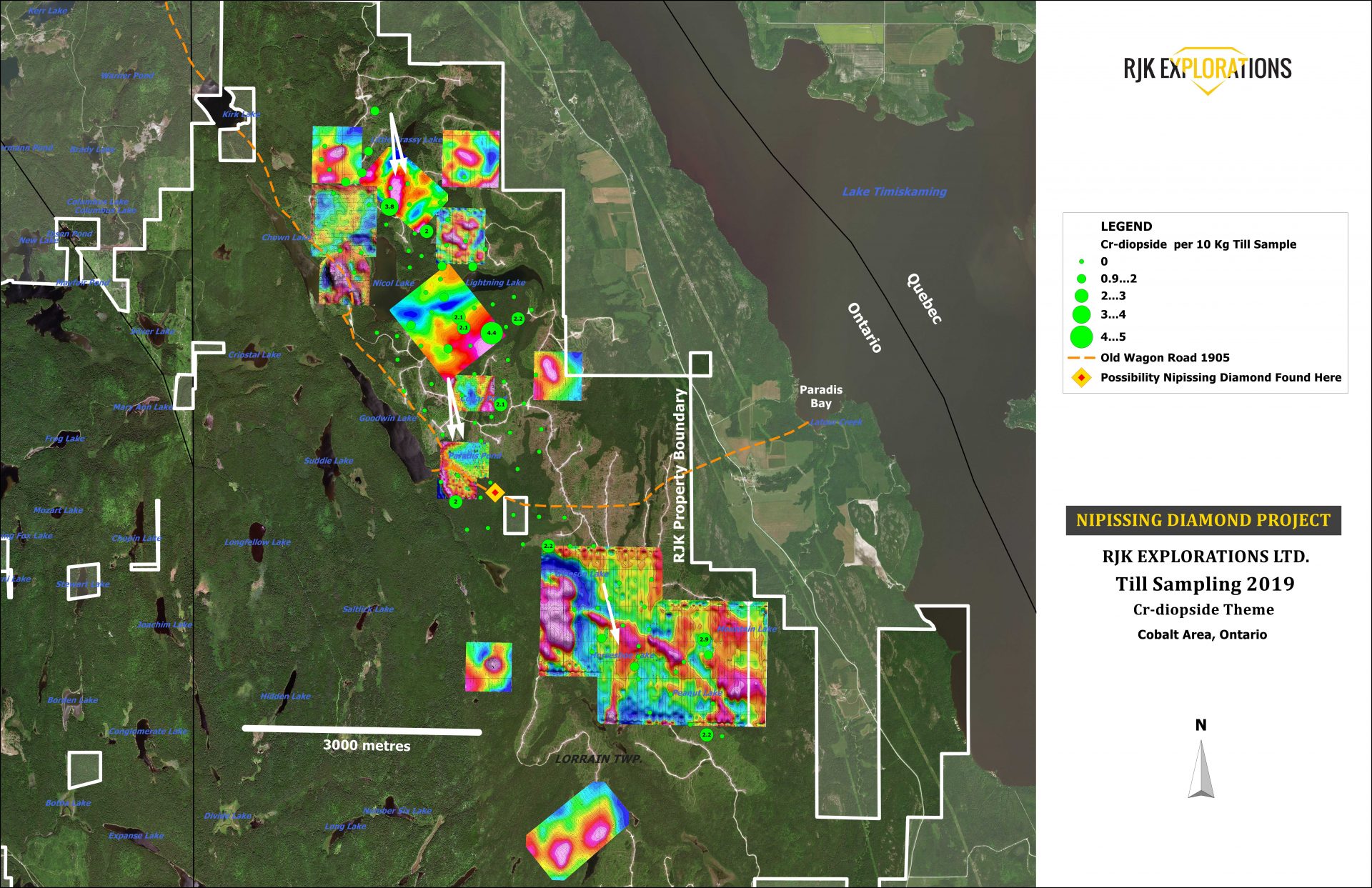
Notes:
- Chrome Diopsides generally disintegrate the fastest of all KIMs, and therefore historically tend to indicate proximity to a kimberlite source.
Ilmenites
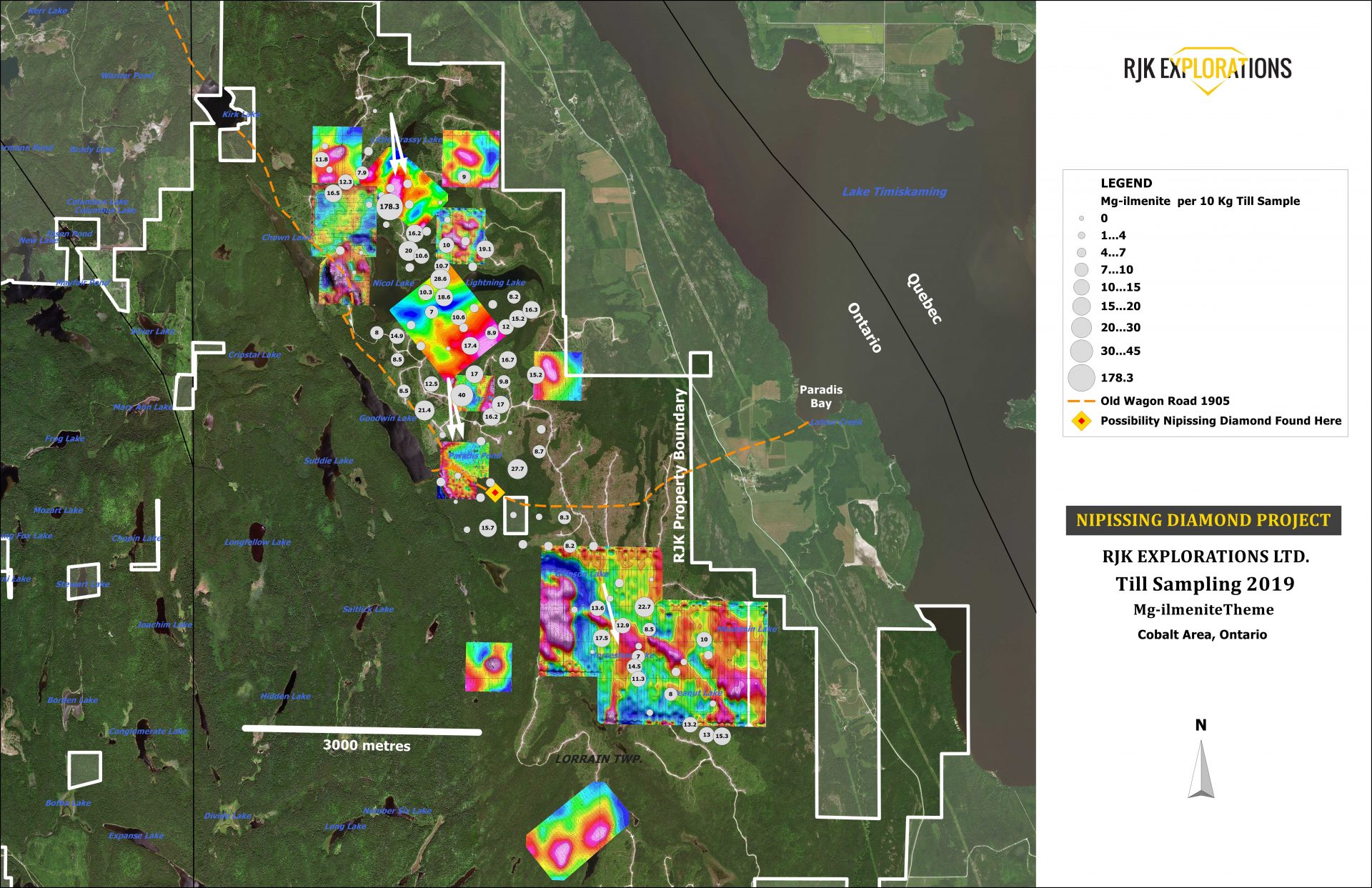
Notes:
- Ilmenite chemistry is very important when determining the odds of diamonds in the kimberlite origin, as specific chemistry types are highly correlated world-wide with diamondiferous kimberlite pipes.
Chromites
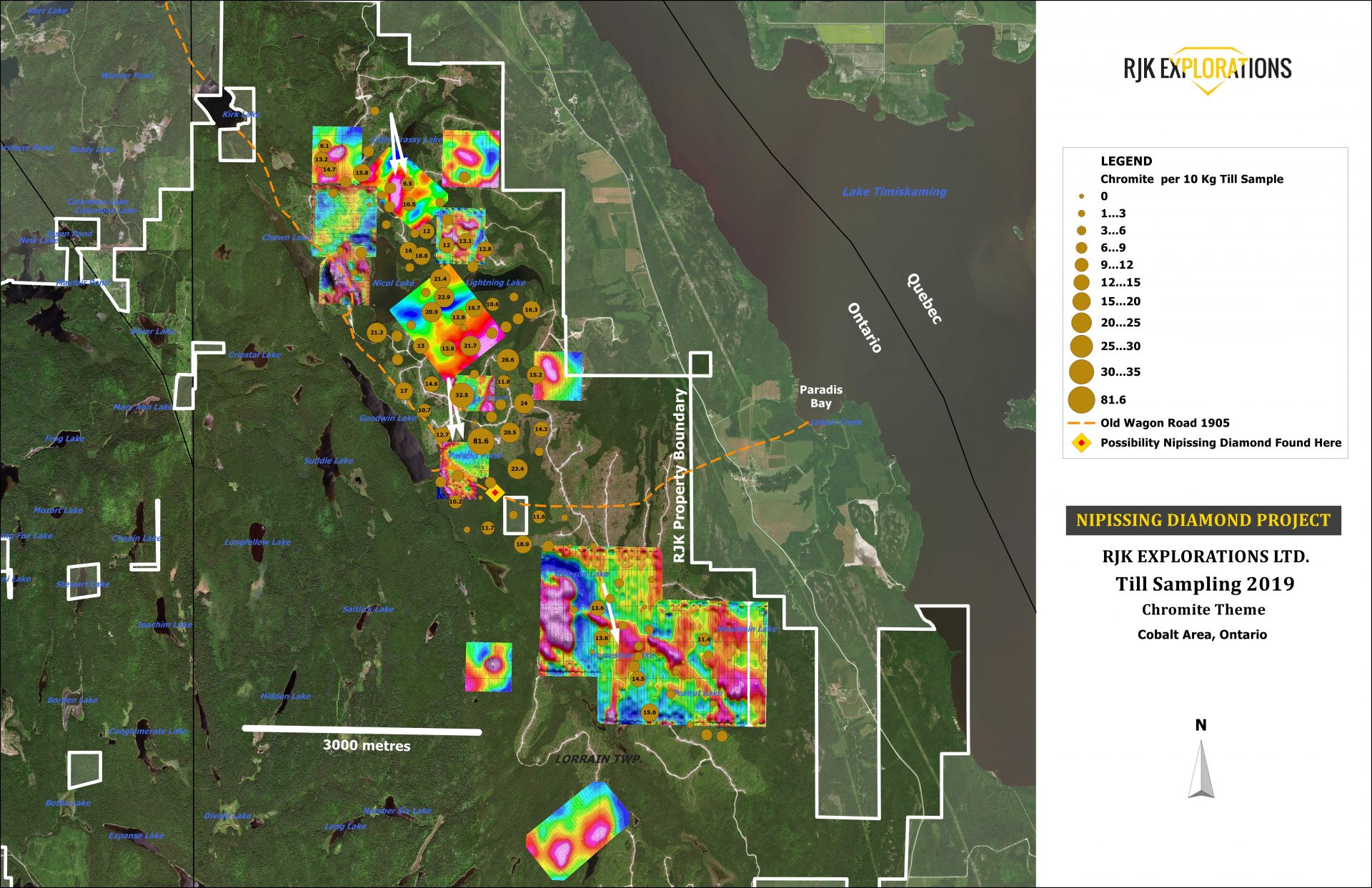
Forsterite
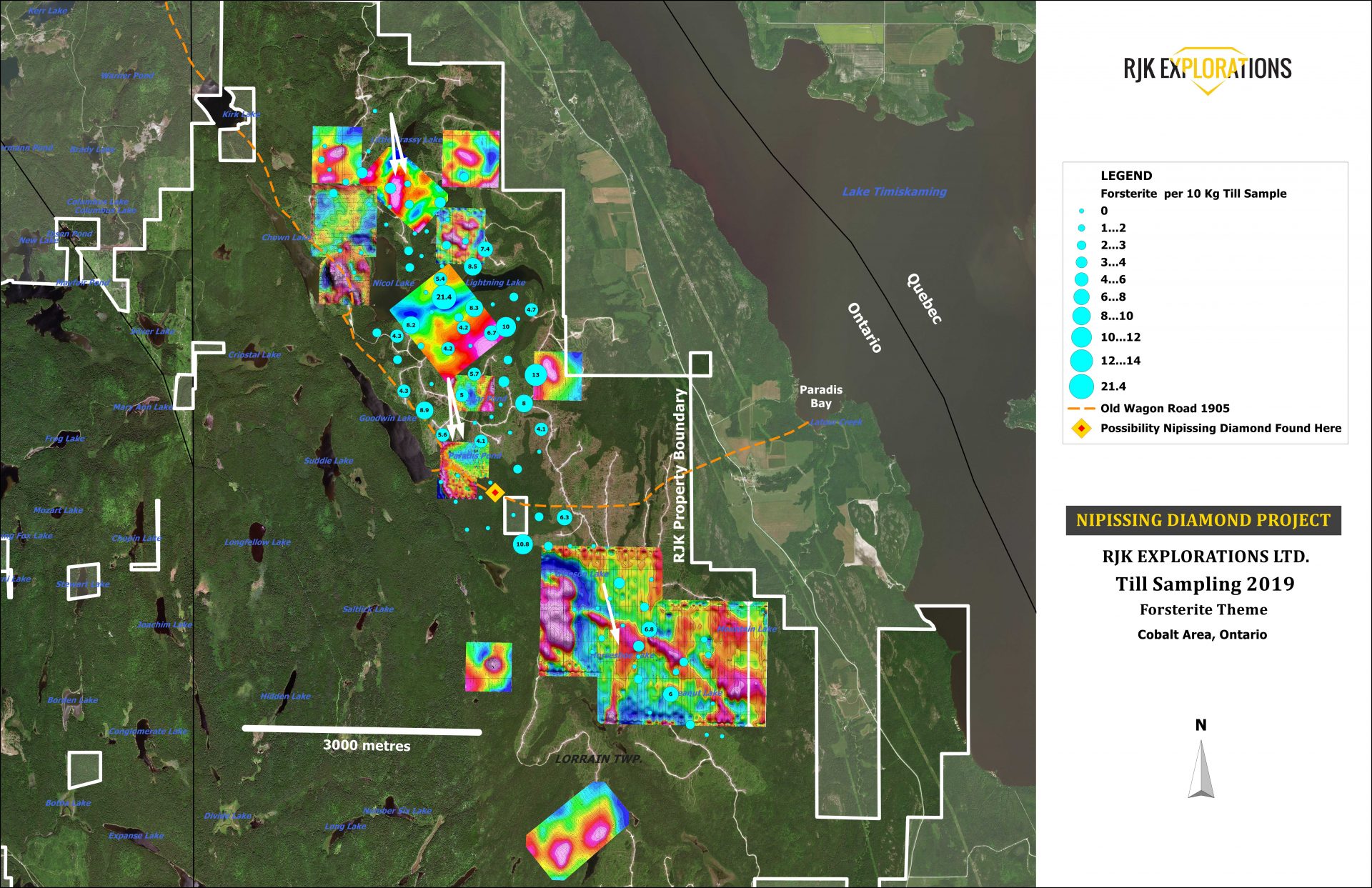
KIMS Over Geology
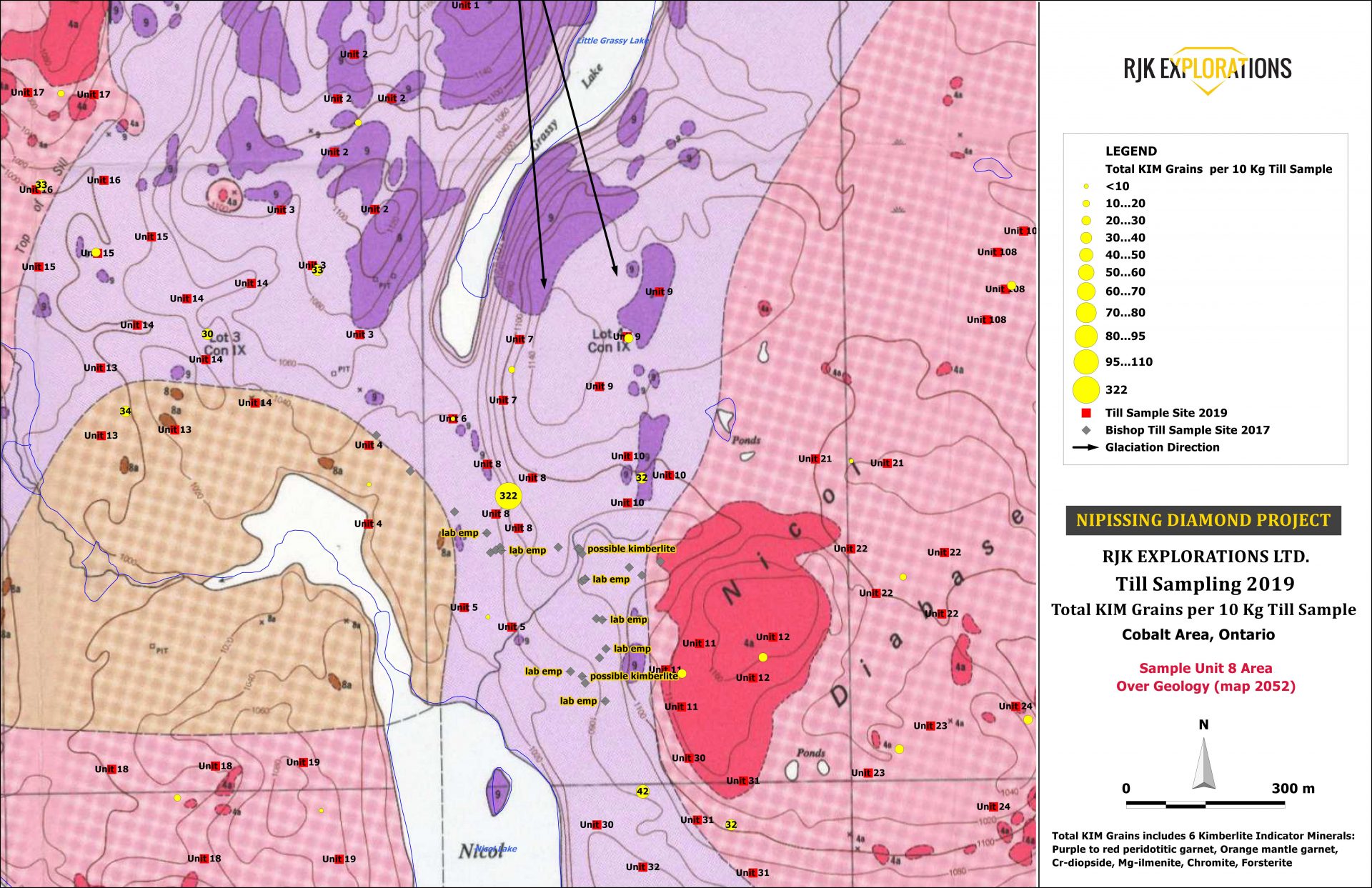
Notes:
- Rocks in two locations down-ice from Grassy Lake were found and are believed to be kimberlite.
- The red dot locations indicate where samples were taken, but in the field, they’re not weighed. The samples are normalized in the lab to 10kg for consistency, and sometimes multiple till samples close to each other are combined to total 10kg of till.
KIMs Over Topography
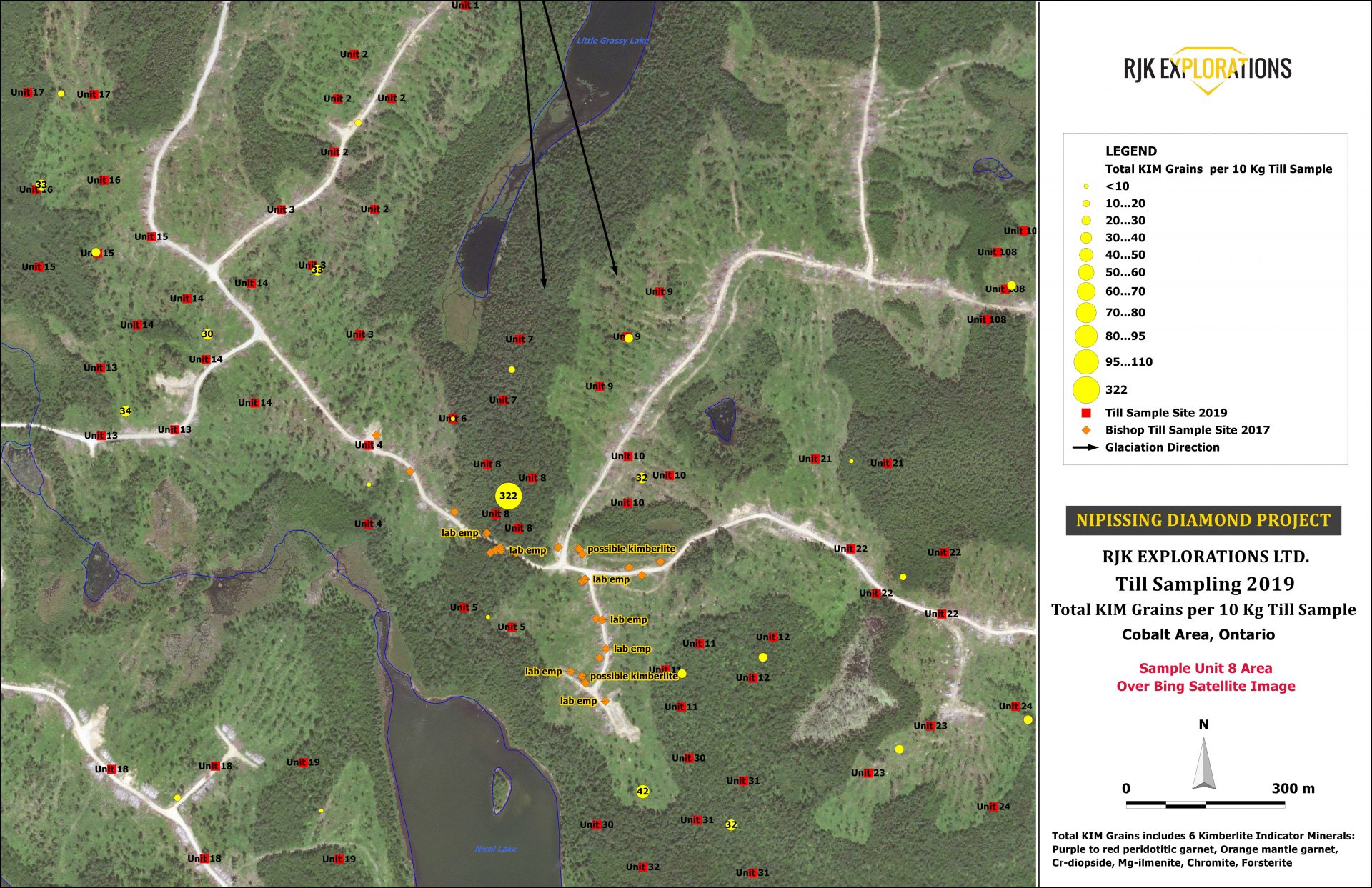
Notes:
- Rocks in two locations down-ice from Grassy Lake were found and are believed to be kimberlite.
- The red dot locations indicate where samples were taken, but in the field, they’re not weighed. The samples are normalized in the lab to 10kg for consistency, and sometimes multiple till samples close to each other are combined to total 10kg of till.
